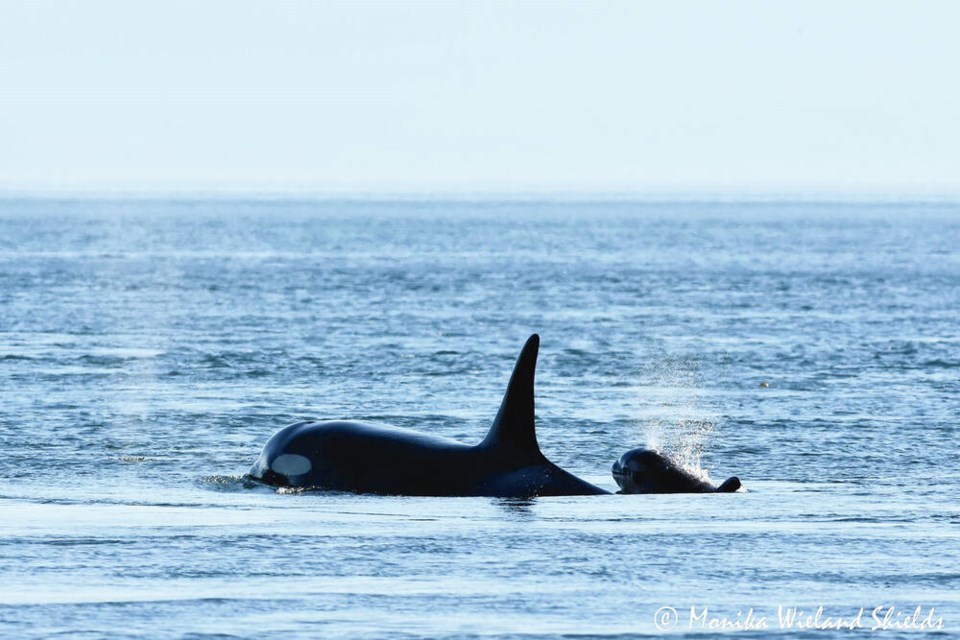A new calf has been reported in the endangered southern resident killer whale population.
The tiny orca was spotted with L90 Ballena — a 31-year-old female who has never been documented with a calf — on Sunday off Lime Kiln Park on San Juan Island near the international boundary east of Cordova Bay.
The calf was photographed swimming with Ballena heading north. The two were alone, according to the Orca Behavior Institute, based in Friday Harbour, Washington.
J-, K- and L-pods were all in the Salish Sea over the weekend.
“After hearing all three pods on the Haro Strait hydrophones, we got up early and scanned the west side of San Juan Island from north to south without turning up any dorsal fins,” the institute said in a social media post Sunday.
“A couple hours later, we got word of Southern Residents heading west from Sooke, and assumed they were all heading back out.”
Then in the early afternoon, there was a report of an orca with a young calf off Lime Kiln Park.
Scientists assumed it was Bigg’s, or transient orcas, but photos shared by Ashley Whitman indicated the adult was L90 Ballena with a calf.
Ballena is the only surviving member of the L26 matriline in L-pod, the most populous of the three endangered orca pods.
The Orca Behavior Institute found the pair at San Juan County Park.
“Just as surprising as the calf was perhaps the fact that there were no other whales in sight,” the post said. “It was just the two of them.”
The pair were monitored from shore for more than five hours as they travelled the west side of San Juan Island.
While unexpected, it’s not without precedent for new mothers to “take some space away from the rest of the group” and travel in inland waters on their own, said the institute.
The Center for Whale Research said the calf, named L128, appears to be healthy and “very new.”
Drone photography under special permitting showed the mother and calf swimming strongly.
“It’s tiny and has very clear fetal folds,” the Center for Whale Research said in its own post.
“Our best guess is that it was born within the last three days. We can also confirm that the calf is nursing and moving normally. We will continue monitoring Mom and the calf while they are in the area.”
The southern resident killer whale population is currently at 75 individuals in the three pods, according to the latest census, released in July 2023.
The fish-eating southern residents have been in steady decline due to reduced populations of chinook salmon, their main food, as well as contaminants and disturbance from vessel noise, which inhibits hunting.
The Washington Department of Fish and Wildlife said the small number of reproductively active individuals in the southern population over generations has led to “inbreeding depression” — reduced survival and fertility in offspring of related individuals — which has also contributed to population decline.



